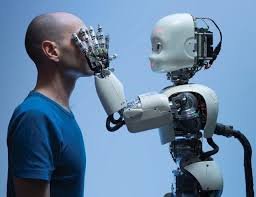In recent years, robotics technology has evolved at an unprecedented pace, transforming industries and redefining how humans interact with machines. As someone deeply immersed in research on robotics, I find it fascinating to explore the cutting-edge advancements shaping this dynamic field.
What is Robotics Technology?
Robotics is an interdisciplinary field combining mechanical engineering, electrical engineering, computer science, and artificial intelligence (AI) to create intelligent machines capable of performing tasks autonomously or semi-autonomously. From industrial robots assembling cars to humanoid robots assisting in healthcare, robotics technology is everywhere.
Key Components of Robotics Technology
Sensing and Perception: Robots use sensors (like cameras, LiDAR, or ultrasonic sensors) to perceive their environment. Advanced AI algorithms then process this data to make real-time decisions.
Artificial Intelligence: Machine learning and AI enable robots to analyze data, recognize patterns, and improve performance over time. AI-driven robots can even predict outcomes, enhancing their utility in complex environments.
Actuators and Motion Control: Motors and actuators are the backbone of robotic movement. Innovations in this area are allowing robots to perform delicate tasks, such as surgery, with incredible precision.
Human-Robot Interaction: User-friendly interfaces and natural language processing are bridging the gap between humans and robots, making them more accessible and easier to work with.
Current Applications of Robotics
Healthcare: Surgical robots, rehabilitation devices, and AI-powered diagnostics are revolutionizing patient care.
Manufacturing: Industrial robots enhance efficiency, precision, and safety in production lines.
Agriculture: Drones and robotic systems automate tasks like planting, harvesting, and monitoring crops.
Logistics and Supply Chain: Autonomous delivery robots and warehouse automation systems streamline operations.
Space Exploration: Rovers and robotic arms are helping us explore the universe like never before.
The Ethical and Social Implications
With robotics' rapid integration into society, there are pressing questions about ethics, privacy, and employment. How do we ensure robots operate safely and ethically? What happens to jobs as automation rises? As researchers, we must address these challenges to create a balanced and equitable future.
Future Trends in Robotics
Swarm Robotics: Inspired by the collective behavior of animals, swarm robotics involves large numbers of simple robots working together to perform complex tasks.
Soft Robotics: Unlike traditional rigid robots, soft robotics uses flexible materials to mimic biological organisms, opening new possibilities in healthcare and beyond.
Autonomous Vehicles: Self-driving cars, drones, and underwater robots are expected to revolutionize transportation and exploration.
Robotics in Daily Life: Personal assistant robots and smart home systems will become commonplace, making life more convenient.
Final Thoughts
The robotics revolution is just beginning, and the possibilities are limitless. As researchers, technologists, and innovators, we have a unique opportunity to shape this future. By combining ingenuity with ethical responsibility, we can ensure robotics technology improves lives, drives progress, and inspires generations to come.
What are your thoughts on the advancements in robotics? Let’s discuss in the comments below!
If you’re as passionate about robotics as I am, follow me for more insights into this rapidly evolving field!
